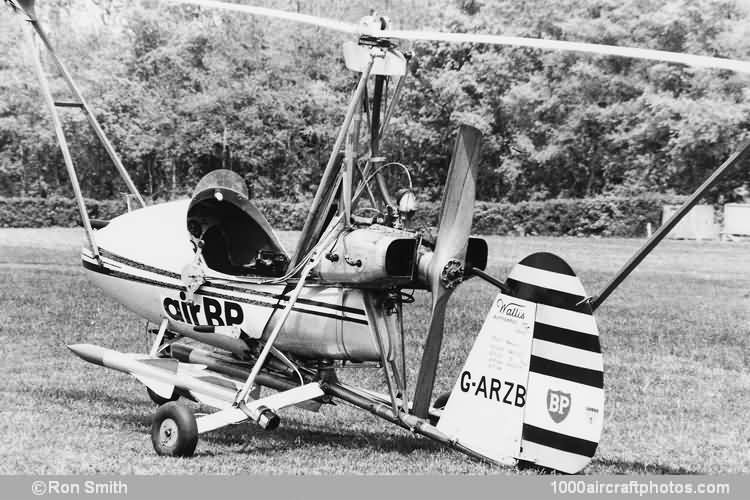03/31/2012. Remarks by Johan Visschedijk: "By adopting a completely new design approach to the mechanical details of the single-seat ultralight autogyro, Wing Commander Kenneth Horatio Wallis produced a much-refined aircraft which could be flown quite safely "hands and feet off" as shown with the prototype G-ARRT, flown for first time in August, 1961.
It incorporated many patented features, including a rotor head with offset gimbal system to provide hands and feet off stability and to eliminate pitch-up and "tuck under" hazards; a high-speed flexible rotor spin-up shaft with positive disengagement during flight; an automatic system of controlling rotor drive on take off which allowed power to be applied until the last moment; centrifugal stops to control rotor blade teetering; and a novel safe starting arrangement.
A pre-production development of G-ARRT, known as the WA.116, was produced by Beagle Aircraft Ltd, in 1962, for evaluation by the British Army. G-ARZA flew for the first time on May 10, 1962, and was used for all initial strain-gauge testing and handling trials, and a CofA was granted in August 1962. Owing to the use of an uncertificated engine, intended originally for target drone applications, the CofA was necessarily restricted.
The WA.116 was not readily suitable for fitment of a fully-certificated engine and this design was, therefore, being made available to amateur pilots who were satisfied to operate with a Permit to Fly. To suit it for this market, the design was amended and simplified, retaining the well-proven structural integrity of the prototype. This version was known as the WA.116A and Wallis Autogyros manufactured an initial batch of 12 complete WA.116As.
Pictured is the most famous of the Ken Wallis series of record-breaking autogyros due to its starring role in the James Bond film "You Only Live Twice". In this photo Ken Wallis is flying the aircraft hands-off."
